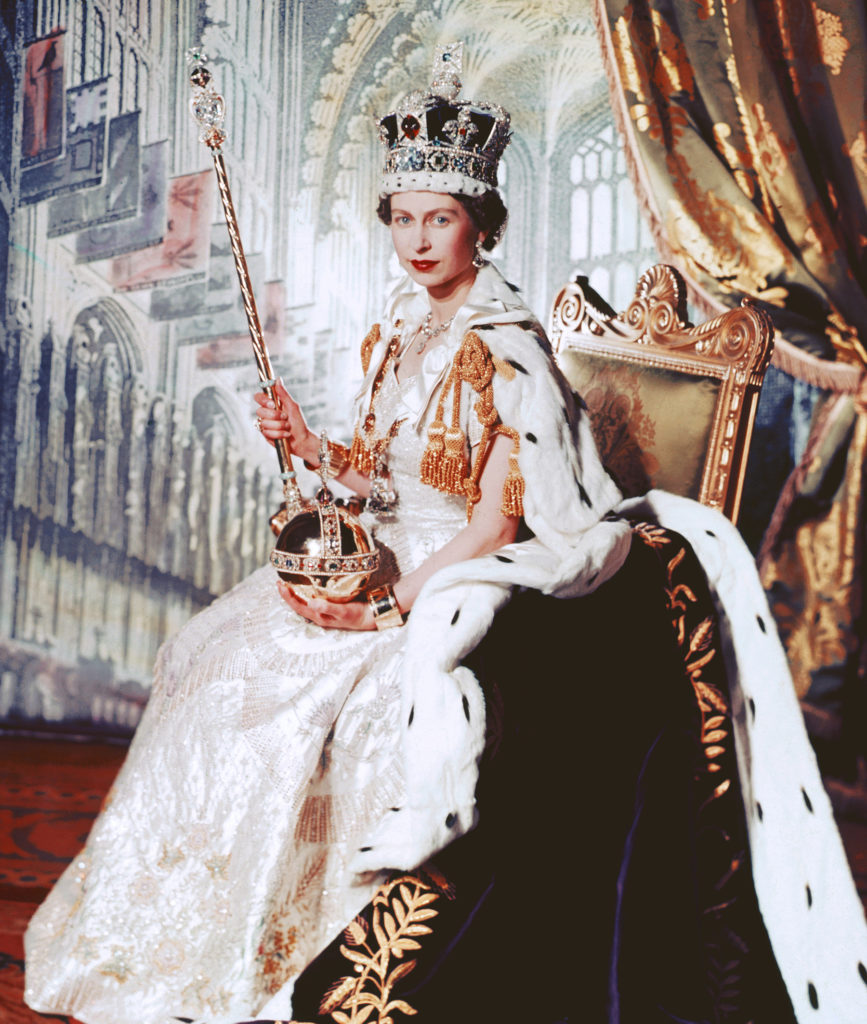Chief Curator Robert Leonard on Peter Wells’s short film Little Queen.
New Zealand has come a long way since the 1953–4 Royal Tour. When the just-crowned Queen Elizabeth II and Prince Philip visit New Zealand, thousands of loyal subjects flock to Auckland’s Queen Street waving Union Jacks, some camping overnight to secure a good view. The young couple go on to visit over forty towns and attend over 100 functions. It’s said that three-in-four New Zealanders see them. Windsor-mania.
Things go downhill after that. The world changes. Britain’s colonies increasingly express their independence and distance themselves—post-colonialism. In 1973, New Zealand’s privileged relationship with Britain ceases, as Britain joins the Common Market, cutting us adrift. Then, following the royalist spike of Charles and Diana’s picture-perfect wedding in 1981, they too split in 1996! Another nail in the coffin.
In a Guardian interview last month, Jacinda Ardern says she expects New Zealand will become a republic within her lifetime, but that achieving this is not a priority for her Government. In her words, republicanism isn’t ‘top of mind’ for New Zealanders. (Interestingly, a few weeks later, she meets the Queen at Buckingham Palace and toasts the Commonwealth—diplomacy!) I guess, most New Zealanders assume we’re already self-governing, bar the fine print. And, though we couldn’t be fussed with changing the flag, even that seemed to have little to do with fondness for the motherland, more with frustration with John Key, the process, and flag waving per se.
In researching This Is New Zealand, I’ve been thinking about the 1953–4 Royal Tour, and how much things have and haven’t changed since. I remember Peter Wells’s remarkable short film, his second, Little Queen. I saw it in the year it was made, 1983—the year before the Homosexual Law Reform Bill was introduced into Parliament. It was in a four-film programme that, in retrospect, represented a high-water mark in New Zealand short-film making. The other films were Jane Campion’s Peel, Alison McLean’s Taunt, and Gregor Nicholas’s Bodyspeak.
Set against the backdrop of the Royal Tour, Little Queen centres on a young boy who imagines his own glorious coronation after seeing an image of Her Majesty enthroned on a cake-tin lid. The film is partly autobiographical. Wells explains: ‘Set at the time when the Queen came to the dominions to thank them very much for sending all the boys over to Europe to fight England’s wars … on these distant shores, on a street corner stood I … a little queen holding a paper flag, watching heap big queen drive slowly by.’ He was three.
Wells describes himself as ‘a Pakeha growing up homosexual in a society which itself had such an insecure identity’, linking his exceptional identity as a gay man to the state of the nation. Or, as Roger Horrocks put it, Little Queen ‘suggested a parallel between the problems of a boy trying to work out his own identity and the country’s repressed condition as a colony’. The film certainly shows how conservative mainstream images (the Symbolic) can be appropriated and overwritten as personal fantasy (the Imaginary), converting what oppresses us into our means of escape.
Little Queen is bravura filmmaking on a shoestring. It has virtually no dialogue, but uses iconic images and sounds to trigger memories, to evoke the cultural textures of the period from a child’s point of view. And it anticipates much of what Wells will go on to explore in his subsequent films and writings: gay perspectives and colonial themes.
While This Is New Zealand is on, I thought we must take the opportunity to show this important but rarely seen film. And so it will screen as part of Tuatara Open Late on Thursday 3 May at 6pm. Peter Wells will be joining documentary maker, photographer, and curator Gareth Watkins for a Q-and-A. Don’t miss it.
If there’s time for questions from the floor, I have one: Peter, how does it feel to go from being a preschooler in the early 1950s, seeing the Queen go by when she was glamorous (still in her twenties), to being made a Member of the New Zealand Order of Merit by the self-same, albeit infinitely older and sterner Queen in 2006 (then turning eighty)?
—Robert Leonard, Chief Curator


